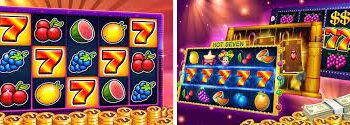
The table top or playing surface as it is commonly known, is the playing surface and the area in front of the player that counts the most. This area is in front of the players that are sitting around the table. It contains the chips that the players are playing the hand. Next to the chip stacks are the blinds or forced bets. Blinds are put in place of antes for poker games because it keeps the poker games from breaking.
All of the other players are participating in a particular hand and are throwing in their chips to the center of the table in order to bet or raise the hand. During a poker game there is never a better hand on the table than the one that has not yet been played. If a player has the best hand at this point he can become all of the other players that are still in the hand to either raise the bet, call the bet, or fold their hand and give the player in front of that player the pot. When a player bets the next person must either call the bet or raise the bet in order to stay in the hand. This continues on until a single player is left and they will have to have a go at the hand as well.
When a hand is played world wide, it is not necessary that the player sitting in front of the dealer button will have to act first. As long as the player has a minimum of two players and a full house, the dealer will not play the hand or have to place in the blinds. The sit and go poker rules will state that if two players do not have enough chips to cover the amount of the bet on the table, then the blinds are used to cover the players. For example, in a game you would have $300 chips but the small blind would be $20 and the big blind $30, then the dealer would be $100 and the first blind would be $10.
The next person to the left of the big blind would place a small blind and the next person would place a big blind. Once the blinds are placed, the dealer will deal the cards. First, two cards will be dealt to each player, then, one card at a time. The first three cards that are dealt to each player are called the flop. After the flop, a card will be placed in the middle of the table as a community board and the four tiles that are placed on the board together will be called the board. The goal of the game is to get a group of tiles that are all the same except for one that has a particular number or letter. This is called the straight. The highest number or letter that can be placed is 9. This means that the player can have a total of 33 spots on the board. After the player has made a straight, the fourth player can reveal the cards and the player with the highest number or letter wins.
After the game is completed, the player with the highest number or letter will win. This rule is repeated with each new hand that is played. There are many variations of this particular game, as well as different forms of play. The basics of compile are similar to the community board game. The only difference is that there are no community tiles. The player hand that is highest when applied with the two initial cards will count. The highest five-card hand will win. The player will have the opportunity to use the community cards to again change the highest hand. This will repeat with each new hand that is played.
When the player hand is ready to be revealed, the MPO777 will give each player two initial cards that are face down and one additional card that is placed face up. The player will now have five cards. Most of the time, in the beginning, most players will have no idea what the highest hand is. The dealer will be sure to explain that the first player to have their hand of five cards with the highest card wins the game. The concept of five-card pulling is far more complex than the usual poker hand ranking system. In this game, the player who initially has the highest card will not necessarily win the game.
The game of five-card pull can be played with any number of players. However, this game is better when there are only two or three players. The reason for this is the fact that the dealer will generally bet on the banker’s hand more often, thereby destroying the advantage a player will have of betting on their own hand.


